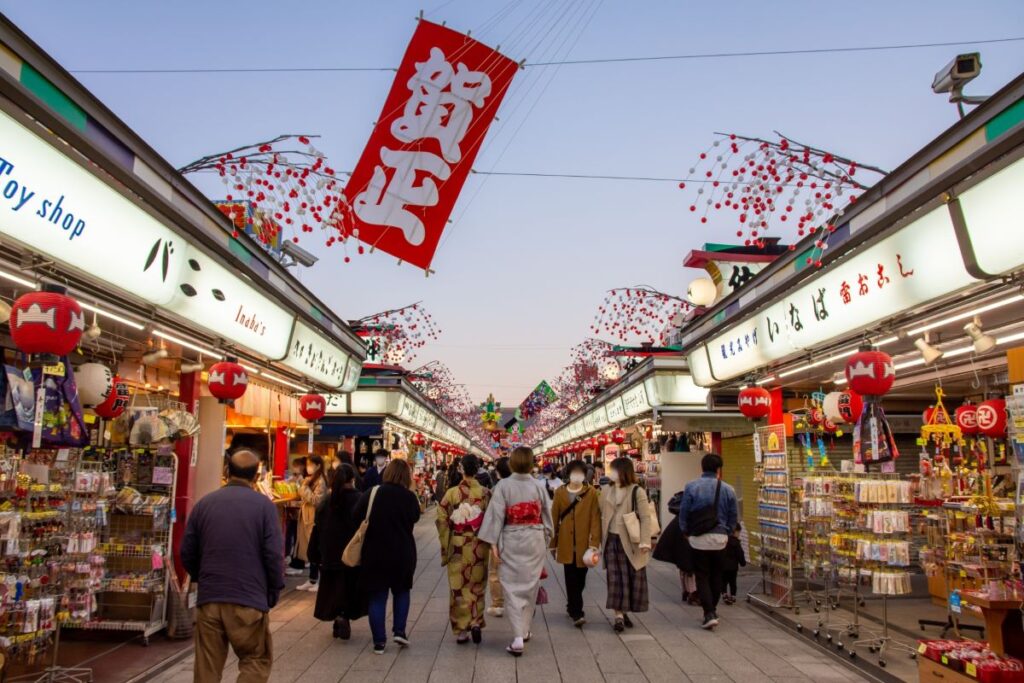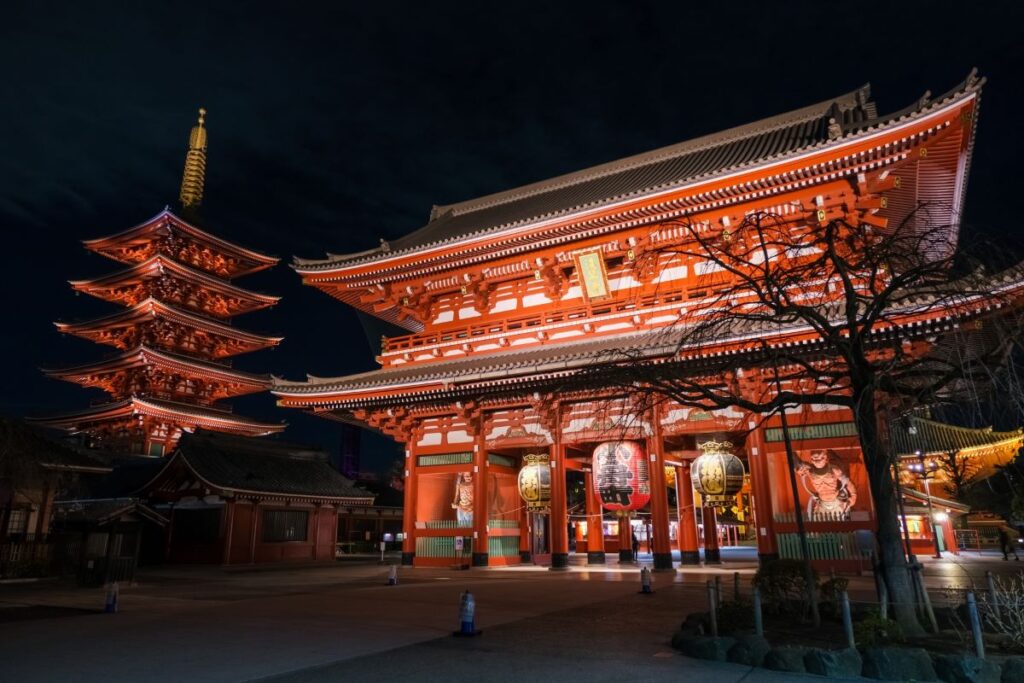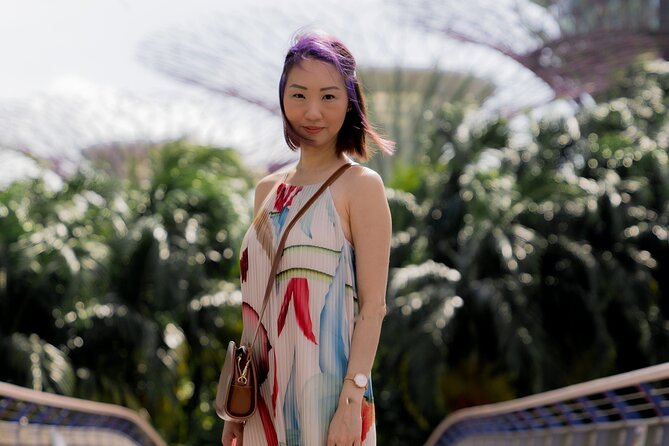Nestled in the bustling city of Tokyo, Japan, amidst towering skyscrapers and flashing neon lights, lies an ancient Buddhist temple that has stood the test of time for over a millennium.
Sensoji Temple, also known as Asakusa Kannon Temple, is a cultural and spiritual gem that attracts millions of visitors each year from all corners of the globe.

With its rich history, intricate architecture, and vibrant festivals, Sensoji Temple is a true marvel that offers a glimpse into Japan’s ancient past and its enduring traditions. Join us as we delve into the captivating history and wonders of Sensoji Temple and discover why it continues to captivate the hearts and minds of so many.
History Of Senso-ji Temple

The history of Sensoji, one of the most famous and oldest Buddhist temples in Tokyo, Japan, dates back to the 7th century. According to legend, in the year 628, two brothers, Hinokuma Hamanari and Hinokuma Takenari, were fishing in the nearby Sumida River when they caught a small statue of the Bodhisattva Kannon.
The brothers recognized the importance of the statue and immediately took it to their village chief, who identified it as a religious artifact. The chief then built a small temple on the site where the statue was found to enshrine the Bodhisattva Kannon.

Over the centuries, the temple grew in size and popularity, attracting pilgrims from all over Japan. However, the original temple was destroyed during World War II, and the current structure was rebuilt in 1958.
Today, Sensoji Temple is a popular tourist destination and a symbol of Tokyo’s rich cultural heritage. Visitors can explore the temple’s many halls, gates, and pagodas, including the famous Kaminarimon Gate with its enormous red lantern, and Nakamise-dori, a shopping street lined with traditional Japanese crafts and souvenirs. The temple is also known for its lively festivals, including the Sanja Matsuri in May and the Hozuki Market in July.
What To See At Sensoji Temple?

Sensoji Temple, also known as Asakusa Kannon Temple, is a sprawling complex that offers a multitude of sights and experiences. Here are some of the must-see attractions and activities at Sensoji Temple:
- Kaminarimon Gate: This massive entrance gate, adorned with a huge red lantern, is one of the most iconic symbols of Tokyo and marks the beginning of the approach to the temple.
- Nakamise-Dori: A vibrant shopping street lined with traditional Japanese crafts and souvenirs, Nakamise streetis the perfect place to browse for unique gifts and snacks.
- Hozomon Gate: The second gate leading to the main hall of the temple, Hozomon Gate is home to two enormous wooden statues of Nio, the Buddhist guardians of the temple.
- Main Hall: Also known as the Kannondo, the main hall of Sensoji Temple is a magnificent structure that houses a large statue of the Bodhisattva Kannon.
- Five-Story Pagoda: A towering structure that offers sweeping views of the surrounding area, the five-story pagoda is a marvel of architecture and design.
- Festivals: Sensoji Temple is known for its lively festivals, including the Sanja Matsuri in May and the Hozuki Market in July, which offer a chance to experience traditional Japanese culture and festivities.
Whether you’re a history buff, a culture enthusiast, or just looking for a peaceful escape from the city, Sensoji Temple has something for everyone.
Kanimarimon: The ancient gate at sensoji

As you approach Sensoji Temple, you can’t help but be drawn to its magnificent entrance gate, the Kaminarimon. Standing tall and proud, this ancient gate has welcomed visitors to the temple for centuries and is a true symbol of Tokyo’s rich cultural heritage.
At the center of the Kaminarimon gate, you’ll find an enormous red lantern that seems to glow with a fiery intensity, illuminating the path ahead. This lantern, which measures over three meters in diameter, is emblazoned with the gate’s name in bold, black characters, adding to the gate’s mystique and allure.
But the Kaminarimon is more than just a pretty entrance gate. It’s steeped in history and significance, having survived fires, earthquakes, and wars over the centuries. The gate was originally built in 942 but was destroyed and rebuilt several times before the current structure was erected in 1960.

As you walk through the gate, you’ll notice two fearsome statues guarding the entrance. These are the gods of wind and thunder, Fujin and Raijin, who is said to protect the temple from evil spirits and disasters.
Beyond the Kaminarimon, you’ll enter Nakamise-dori, a bustling shopping street filled with traditional Japanese souvenirs and snacks. But even amid the hustle and bustle of the crowds and vendors, the Kaminarimon stands tall, a beacon of peace and tranquility.
Nakamise

This lively shopping street, located just outside the ancient Sensoji Temple in Tokyo, is a veritable treasure trove of traditional Japanese crafts, souvenirs, and snacks.
As you make your way down Nakamise-dori, you’ll be greeted by a dazzling array of sights, sounds, and smells. The vibrant street is lined with over 90 shops and stalls, each offering a unique glimpse into Japan’s rich cultural heritage.
From delicate paper lanterns and intricate kimonos to delicious rice crackers and sweet treats, Nakamise-dori has something for everyone. You’ll also find a range of traditional Japanese crafts, including origami paper, chopsticks, and calligraphy brushes, as well as traditional souvenirs like tea sets, fans, and samurai swords.

But it’s not just the shopping that makes Nakamise-dori so special. The street itself is a marvel of architecture and design, with its traditional wooden buildings and lanterns adding to the authentic Japanese ambiance. And amid the hustle and bustle of the crowds, you’ll find street performers and vendors offering a glimpse into Japan’s lively street culture.
For a truly immersive experience, be sure to try some of the street food on offer, such as the crispy senbei rice crackers, the sweet and savory taiyaki fish-shaped cakes, or the fluffy and fragrant ningyo-yaki cakes.
Nakamise-dori is a living testament to Japan’s rich cultural heritage, a place where ancient traditions and modern commerce collide in a beautiful and vibrant display. So come and explore this famous shopping street, soak up the sights and sounds, and take home a piece of Japan to cherish forever.
Sensogi Pagoda

Rising majestically into the Tokyo sky, the five-story pagoda at Sensoji Temple is a marvel of architectural ingenuity and design. Standing at an impressive height of 53 meters, this ancient tower has been an iconic symbol of Japan’s rich cultural heritage for over 400 years.
As you approach the pagoda, you’ll be struck by its sheer size and grandeur. The towering structure is composed of five levels, each adorned with intricate carvings and decorations that tell the story of Buddhism and its teachings.

The pagoda’s bright red color, which stands out against the clear blue sky, is said to represent the flames of passion and desire, and serves as a reminder of the impermanence of life.
Hozomon Gate

At the entrance of the temple complex stands a grand and imposing structure known as the Hozomon Gate.
Also called the Treasure House Gate, the Hozomon Gate is an impressive structure that dates back to the Edo period. The gate serves as the main entrance to the temple and is flanked by two fierce-looking statues of the Buddhist deities Nio, who are believed to ward off evil spirits.
As you approach the gate, you’ll be struck by its grandeur and the intricate details of its design. The gate is adorned with numerous carvings and decorations, including a large wooden lantern that hangs from the center of the structure.

One of the most unique features of the Hozomon Gate is the fact that it houses a treasure house. The treasure house contains a number of important Buddhist relics and artifacts, including a statue of Kannon, the Buddhist goddess of mercy.
Visitors can enter the treasure house for a small fee and see these valuable and historic items up close. It’s a unique opportunity to learn more about Japan’s rich cultural heritage and the role that Buddhism has played in shaping the country’s history and traditions.
How To Get To Sesoji Temple?

Rising majestically into the Tokyo sky, the five-story pagoda at Sensoji Temple is a marvel of architectural ingenuity and design. Standing at an impressive height of 53 meters, this ancient tower has been an iconic symbol of Japan’s rich cultural heritage for over 400 years.
As you approach the pagoda, you’ll be struck by its sheer size and grandeur. The towering structure is composed of five levels, each adorned with intricate carvings and decorations that tell the story of Buddhism and its teachings.
The pagoda’s bright red color, which stands out against the clear blue sky, is said to represent the flames of passion and desire, and serves as a reminder of the impermanence of life.
How Much Does It Cost To Visit Sensoji Temple?

Visiting the Sensoji Temple itself is free of charge, and there is no admission fee to enter the temple grounds. However, there are certain activities within the temple complex that may require a fee, such as entering the treasure house or participating in a guided tour.
The treasure house is located within the Hozomon Gate, and there is a small admission fee to enter. The fee is currently 300 yen for adults and 200 yen for children.
Additionally, if you wish to participate in a guided tour of the temple, there may be a fee associated with this as well. However, it’s also possible to explore the temple complex on your own and take in the sights and sounds at your own pace.
Keep in mind that there may be additional costs associated with other activities in the surrounding Asakusa area, such as shopping or dining. However, visiting the Sensoji Temple itself is a free and enriching experience that offers a unique glimpse into Japan’s rich cultural heritage and spiritual traditions.




